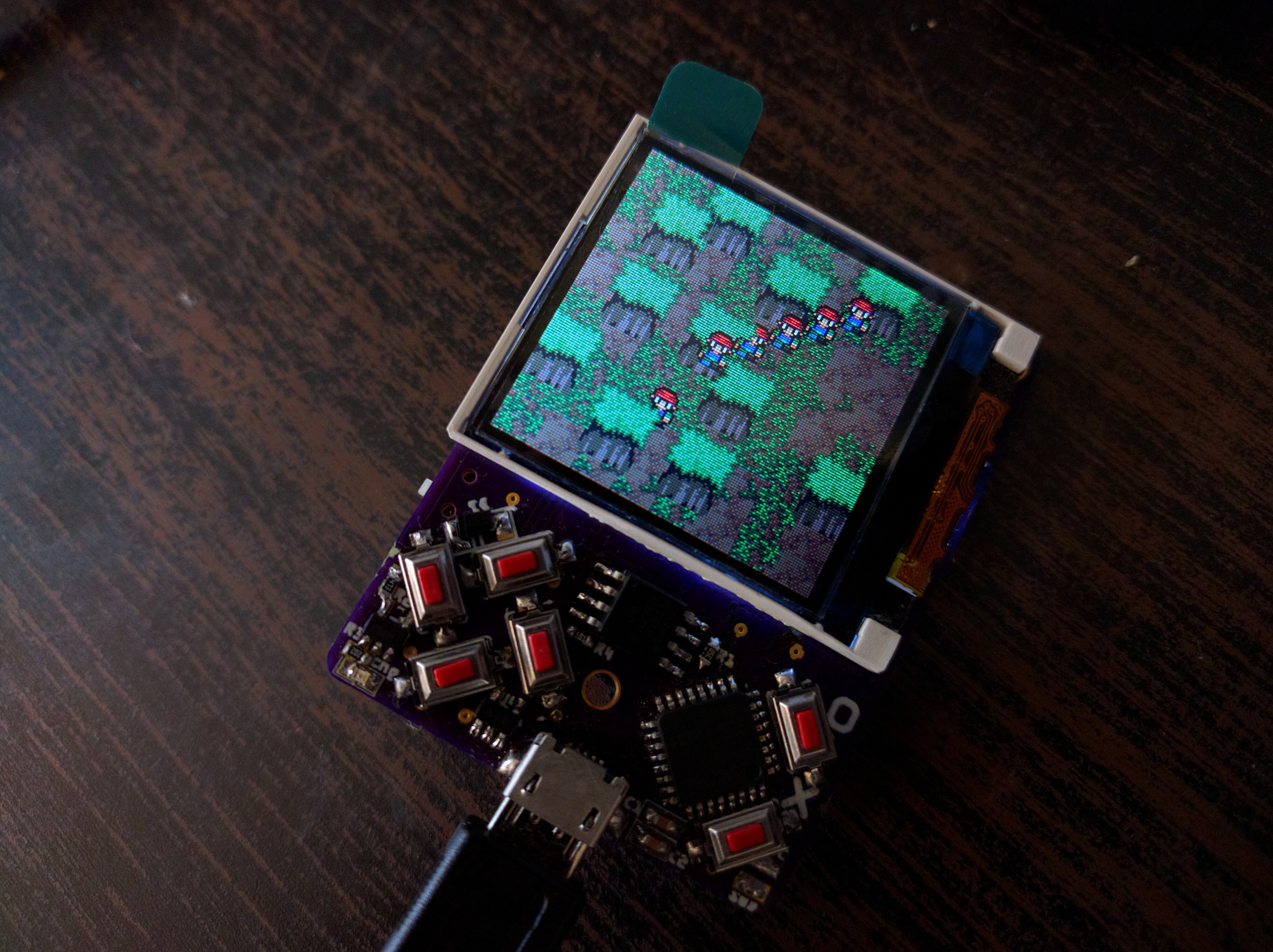I was expecting a considerable speedup from rewriting the whole rendering code as a C module and compiling it into the CircuitPython firmware, but a 50x improvement is much better than anticipated. I was afraid that I will have to limit myself to just a few sprites on the screen at once, and just one or two layers of tiles. But with this speed, there is no such problem. Of course, it will still slow down to around one frame per second if I fill the whole screen with animated sprites, but I think even ¼ of screen is already workable.

 deʃhipu
deʃhipu
Discussions
Become a Hackaday.io Member
Create an account to leave a comment. Already have an account? Log In.
Dało by się użyć jakiejś standardowej biblioteki graficznej?
Jak z poborem prądu? Ile by działało na jednej baterii AA? Da sie to uśpić|wybudzić ?
FPGA ostatnio modne. Podłączyć FPGA do powiedzmy 4 procesorów. Tak działa parallela https://www.parallella.org albo wstawic procesor z84 i odpalic cp/m
Are you sure? yes | no